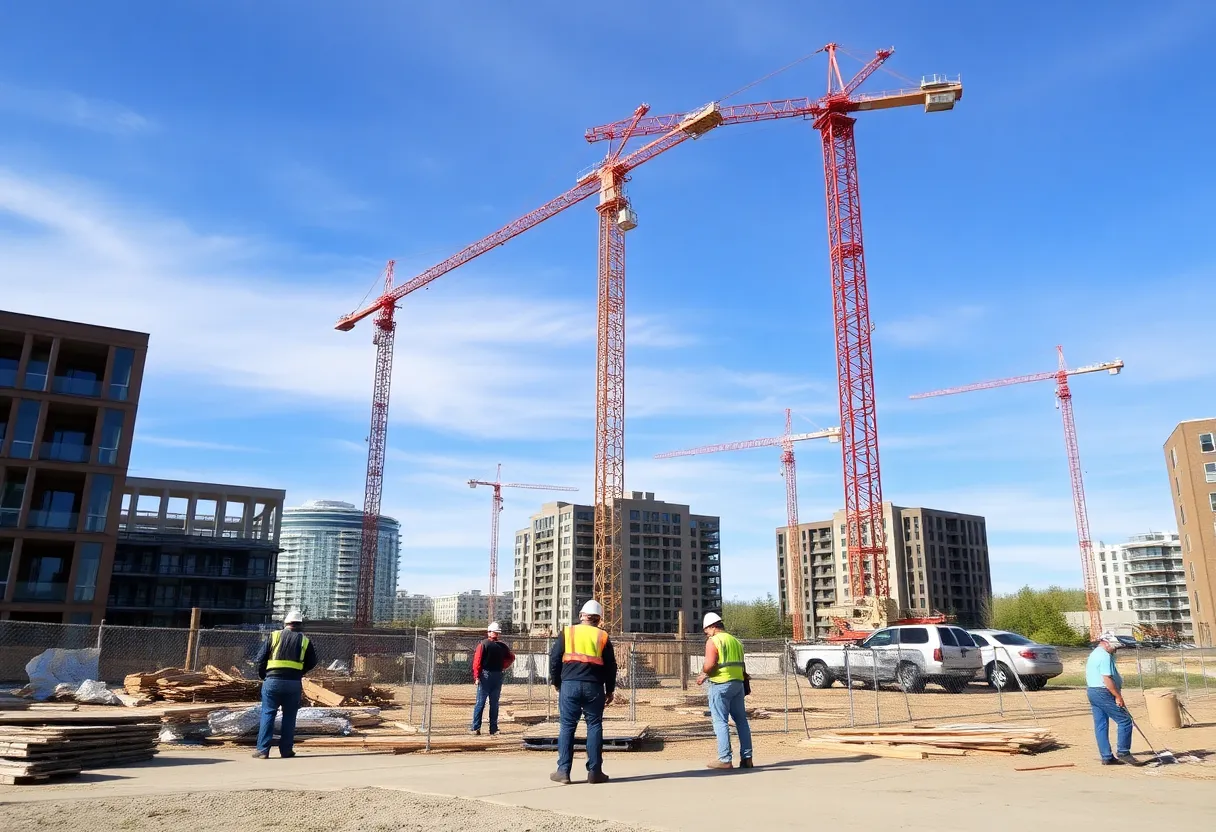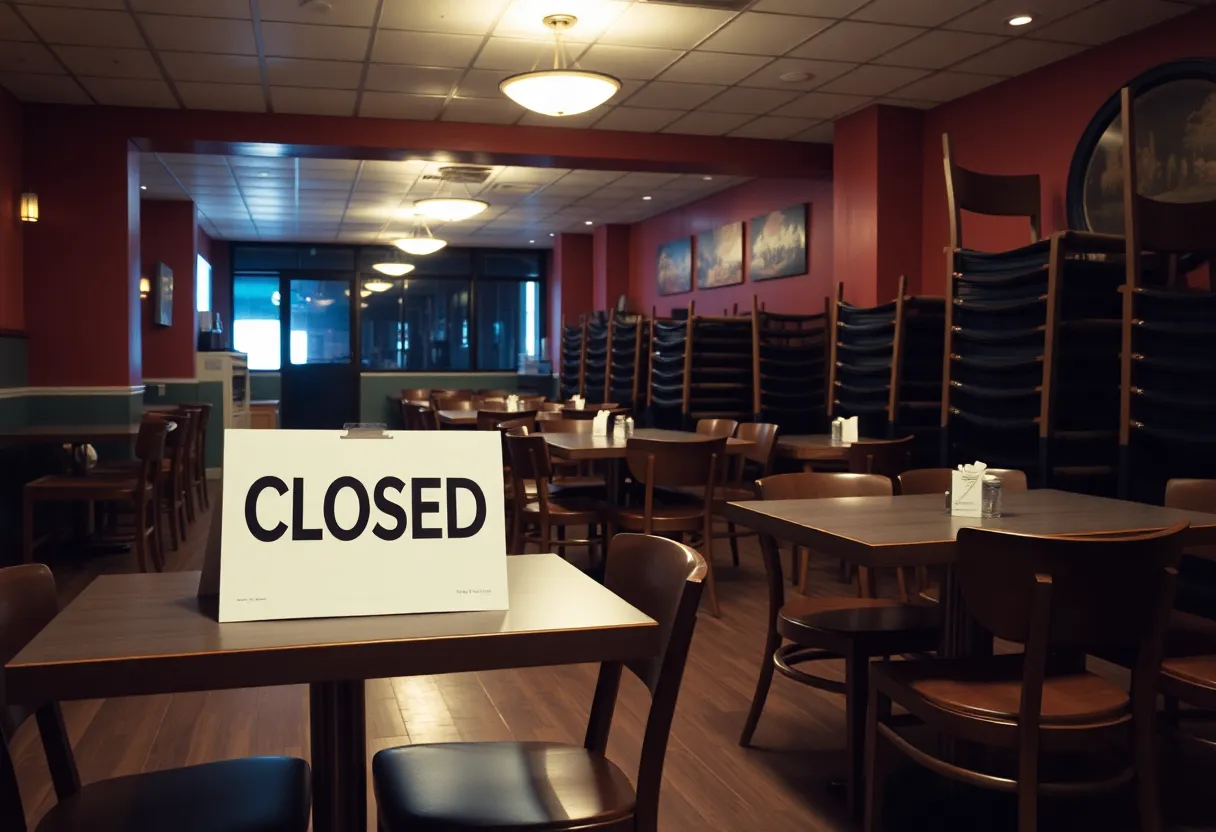News Summary
Vermont’s construction industry is experiencing significant growth with numerous housing developments and infrastructure projects, but it struggles with a critical shortage of skilled labor and rising costs. Major initiatives like Cambrian Rise in Burlington and Finney Crossing in Williston highlight the booming sector, yet local contractors face challenges in meeting demand. Workforce development programs are being introduced to tackle labor shortages as rising housing prices and material costs continue to strain budgets. Industry leaders stress the importance of training programs to secure the future of construction in Vermont.
Burlington, Vermont — The construction industry in Vermont is booming, highlighted by significant housing developments and flood recovery projects but hindered by a critical shortage of skilled labor and rising costs. As demand for construction services continues to soar, local contractors are finding it increasingly challenging to keep up due to a dwindling workforce and climbing expenses.
One major housing initiative at the forefront is Cambrian Rise in Burlington, spearheaded by DEW Construction. This project, which will provide 1,050 residential units, is anticipated to be completed this fall. The expansion of Finney Crossing in Williston, which includes new hotels and commercial spaces, also plays a vital role in bolstering the local economy and meeting housing needs.
The construction momentum in Vermont is supported by federal and state funding, particularly from the Federal Emergency Management Agency (FEMA), which is aiding flood recovery efforts. According to estimates from the Associated General Contractors of Vermont (AGC/VT), construction volume across the state has surged by approximately 12% in the past year, driven largely by one-time funding sources.
Key infrastructure improvements are also underway, such as enhancements at the Swanton wastewater treatment plant and a new sewer project in Colchester being executed by Kingsbury Companies. These projects are essential for maintaining and improving Vermont’s critical infrastructure.
Despite the positive growth in construction volume, Vermont’s workforce, comprising around 15,000 individuals, is insufficient to meet current project demands. Contractors report that although they are busy, they are not operating at full capacity due to a severe shortage of skilled labor. Many companies, including HELM Construction Solutions, are actively advertising for a variety of positions, specifically targeting carpenters, project managers, and office staff.
The challenges are exacerbated by rising housing costs, which have reached a median home price of $422,000. This surge in housing prices makes it increasingly difficult for construction workers to afford living close to job sites, complicating the recruitment of new employees.
Additionally, inflationary pressures and increasing material costs are creating further strain on construction budgets. Some bids are surpassing project budgets, forcing builders to scale back their plans or even shelve projects altogether. Proposed federal tariffs, including a potential 25% increase on goods from Canada and Mexico, further complicate the procurement of necessary materials, intensifying the difficulties faced by Vermont’s construction community.
Nevertheless, opportunities still exist within the industry. Project owners continue to release new initiatives despite the prevailing challenges. Workforce development programs like Vermont Works for Women and a new simulator training center established by AGC/VT are taking steps to address the labor shortage. These initiatives provide scholarships and practical training experiences aimed at equipping individuals for careers in construction.
Personal success stories, exemplified by individuals such as Lily Lukaszevicz, highlight the potential for individuals to secure fulfilling careers in the sector. However, local builders express frustration over the numerous projects that have been turned down due to insufficient labor, underlining the ongoing recruitment struggles that plague the industry.
AGC/VT President John Casella emphasizes the need for smart investments and robust training programs to secure the future of Vermont’s construction industry. Addressing the dual issues of workforce shortages and rising costs will be crucial in ensuring that Vermont can continue to thrive in its construction endeavors and manage its growing infrastructure needs.
Deeper Dive: News & Info About This Topic
HERE Resources
What Are the Most Important Factors to Consider When Building a Multi-Generational Home?
Kyrene School District Revises Closure Plans
Job Losses in New York City’s Financial Sector Amidst Texas Growth
New Jersey Construction Industry Set for Growth
Community Voices Concerns Over School Closures in Kyrene
Colorado Construction Industry Faces Crisis from Rising Tariffs
Peabody Magnet High School Homecoming Parade Canceled
Virginia Faces Electricity Demand Surge Due to Data Centers
Novi Experiences Water Main Break Leading to School Closures
New Report Highlights Major Challenges for New York’s Business Climate
Additional Resources
- Vermont’s Construction Year: Growth, Grit, and Workforce Challenges
- Construction Jobs with the Fastest Wage Growth in Vermont
- Construction Activity Still Strong, Headwinds Prevail
- Google Search: Vermont construction industry
- Preserving History: Vermont’s 1831 Plank House Restoration
- Encyclopedia Britannica: Construction
Author: STAFF HERE NEW YORK WRITER
The NEW YORK STAFF WRITER represents the experienced team at HERENewYork.com, your go-to source for actionable local news and information in New York, the five boroughs, and beyond. Specializing in "news you can use," we cover essential topics like product reviews for personal and business needs, local business directories, politics, real estate trends, neighborhood insights, and state news affecting the area—with deep expertise drawn from years of dedicated reporting and strong community input, including local press releases and business updates. We deliver top reporting on high-value events such as New York Fashion Week, Macy's Thanksgiving Day Parade, and Tribeca Film Festival. Our coverage extends to key organizations like the Greater New York Chamber of Commerce and United Way of New York, plus leading businesses in finance and media that power the local economy such as JPMorgan Chase, Goldman Sachs, and Bloomberg. As part of the broader HERE network, including HEREBuffalo.com, we provide comprehensive, credible insights into New York's dynamic landscape.





